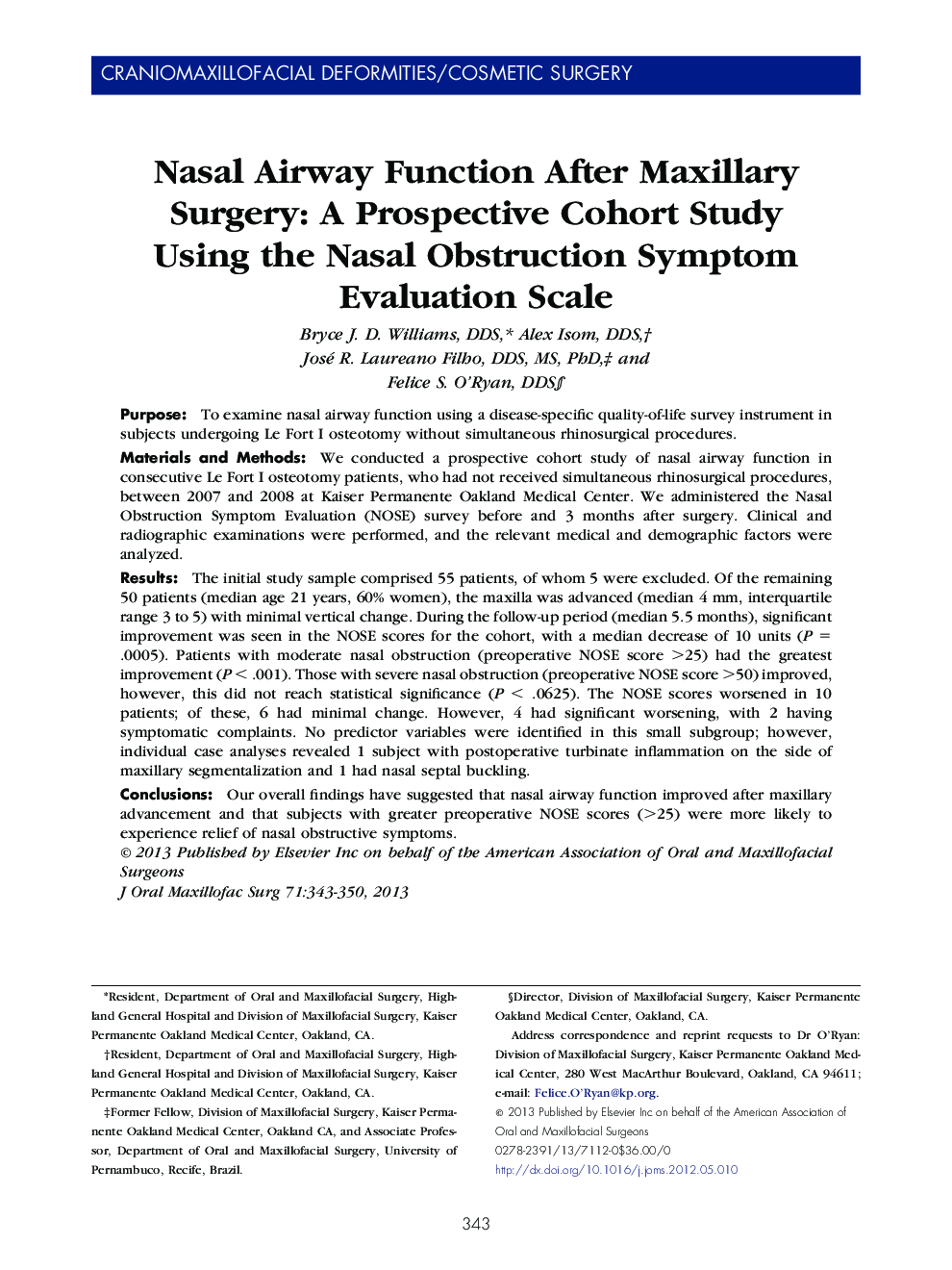| کد مقاله | کد نشریه | سال انتشار | مقاله انگلیسی | نسخه تمام متن |
|---|---|---|---|---|
| 3152750 | 1198013 | 2013 | 8 صفحه PDF | دانلود رایگان |

PurposeTo examine nasal airway function using a disease-specific quality-of-life survey instrument in subjects undergoing Le Fort I osteotomy without simultaneous rhinosurgical procedures.Materials and MethodsWe conducted a prospective cohort study of nasal airway function in consecutive Le Fort I osteotomy patients, who had not received simultaneous rhinosurgical procedures, between 2007 and 2008 at Kaiser Permanente Oakland Medical Center. We administered the Nasal Obstruction Symptom Evaluation (NOSE) survey before and 3 months after surgery. Clinical and radiographic examinations were performed, and the relevant medical and demographic factors were analyzed.ResultsThe initial study sample comprised 55 patients, of whom 5 were excluded. Of the remaining 50 patients (median age 21 years, 60% women), the maxilla was advanced (median 4 mm, interquartile range 3 to 5) with minimal vertical change. During the follow-up period (median 5.5 months), significant improvement was seen in the NOSE scores for the cohort, with a median decrease of 10 units (P = .0005). Patients with moderate nasal obstruction (preoperative NOSE score >25) had the greatest improvement (P < .001). Those with severe nasal obstruction (preoperative NOSE score >50) improved, however, this did not reach statistical significance (P < .0625). The NOSE scores worsened in 10 patients; of these, 6 had minimal change. However, 4 had significant worsening, with 2 having symptomatic complaints. No predictor variables were identified in this small subgroup; however, individual case analyses revealed 1 subject with postoperative turbinate inflammation on the side of maxillary segmentalization and 1 had nasal septal buckling.ConclusionsOur overall findings have suggested that nasal airway function improved after maxillary advancement and that subjects with greater preoperative NOSE scores (>25) were more likely to experience relief of nasal obstructive symptoms.
Journal: Journal of Oral and Maxillofacial Surgery - Volume 71, Issue 2, February 2013, Pages 343–350